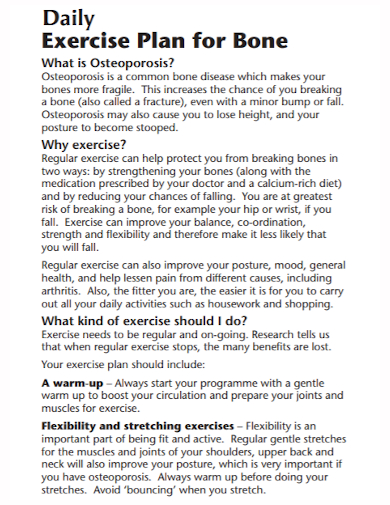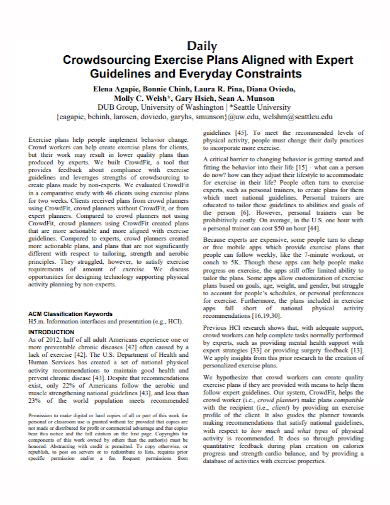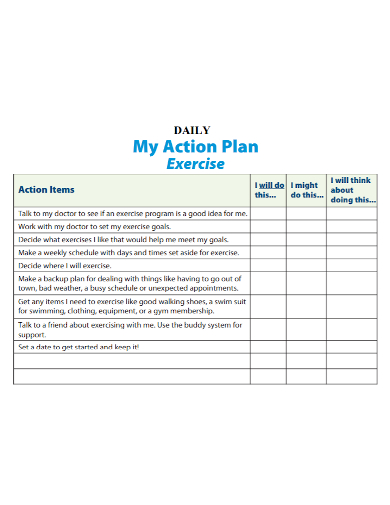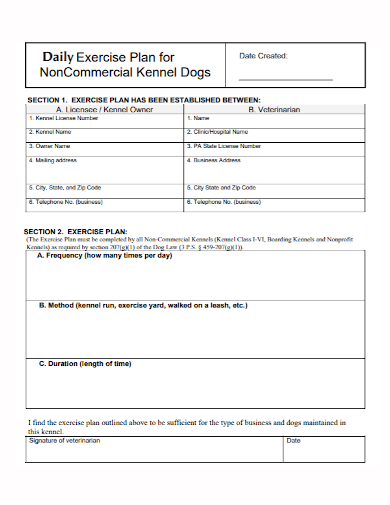You have a hectic schedule, and finding time to stay healthy is difficult. To get in shape, all you need is 20 minutes of exercise per day. If you don’t have time to go to the gym every day, here’s how to get in shape quickly with little to no equipment from almost anywhere. There is no single exercise that can meet all of your requirements. To get the most out of your routine, you should do a variety of activities throughout the week. Otherwise, it’s like eating only fruit—healthy to some extent, but devoid of many of the nutrients found in other foods like fish, vegetables, nuts, and whole grains.
5+ Daily Exercise Plan Samples
Exercising every day may seem daunting, but it’ll be a lot easier than you think because the time commitment is so small. A daily routine also has the advantage of establishing a good habit, which will make it easier to maintain your exercise routine over time. You can mix and match your workouts to your heart’s content. You can do more core-based exercises each week if you’d rather focus on your core than your upper body. You can also opt for a higher concentration in another area if you prefer. Put the workouts together into a routine that works for you.
1. Daily Exercise Plan Template
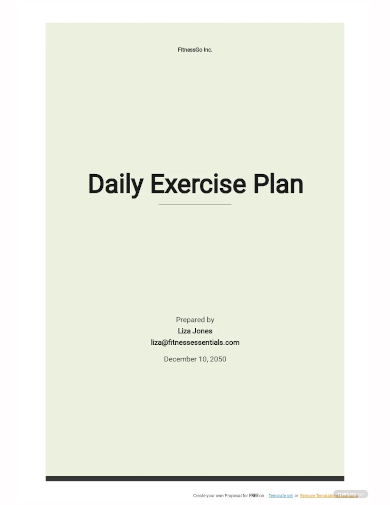
2. Daily Exercise Plan
3. Daily Bone Exercise Plan
4. Sample Daily Exercise Plan
5. Daily Exercise Action Plan
6. Non Commercial Daily Exercise Plan
Average Exercise Every Day
The Department of Health and Human Services recommends the following exercise guidelines for most healthy adults:
- Aerobic exercise. Aim for at least 150 minutes of moderate aerobic activity or 75 minutes of vigorous aerobic activity per week, or a combination of both. According to the instructions, you should do this exercise for over a week. At least 300 minutes per week is recommended to provide even more health benefits and to aid in weight loss or maintenance. Even small amounts of physical activity, however, are beneficial. Short bursts of activity throughout the day can add up to a significant health benefit.
- Strength training is a good thing to do. At least twice a week, do strength training exercises for all major muscle groups. Aim to complete a single set of each exercise with a weight or resistance level that causes your muscles to tire after 12 to 15 repetitions.
Brisk walking, biking, swimming, and mowing the lawn are examples of moderate aerobic exercise. Running, heavy yard work, and aerobic dancing are examples of vigorous aerobic exercise. Weight machines, your body weight, heavy bags, resistance tubing or resistance paddles in the water, or activities like rock climbing can all be used for strength training.
Aim for at least 30 minutes of moderate physical activity every day as a general goal. You may need to exercise more if you want to weight lose, maintain weight loss, or meet specific fitness goals.
It’s also important to cut down on your sitting time. The more time you spend sitting each day, the more likely you are to develop metabolic problems. Even if you get the recommended amount of daily physical activity, sitting too much can harm your health and longevity. People who have lost weight may be more likely to keep it off if they sit less during the day, according to some research.
Do you have a hard time committing to long periods? Even short bursts of activity are beneficial. If you can’t fit in a 30-minute walk during the day, for example, take a few five-minute walks instead. Any activity is preferable to none. What matters most is that you incorporate regular physical activity into your daily routine.
FAQs
How to get started with aerobic exercise?
Walking is generally safe for people of all ages and fitness levels, and it can be easily adjusted to a comfortable pace. It doesn’t jar joints or cause dangerously high heart rates. To increase the difficulty, increase the time, distance, or hills you walk or use resistance bands to tone while walking.
How much should you do strength training?
Strengthening workouts for all major muscle groups (legs, hips, back, chest, abdomen, shoulders, and arms) should be done two or more times a week, with at least 48 hours between sessions, according to the Physical Activity Guidelines for Americans. According to some research, one set per session is effective, but two or three sets may be better. Rep each exercise eight to twelve times more (reps). In order to gain muscle and strength, your body requires at least 48 hours of recovery and repair time between strength training sessions.
If you want to see more samples and formats, check out some daily exercise plan samples and templates provided in the article for your reference.
Related Posts
FREE 7+ Fashion Business Plan Samples in PDF
FREE 10+ Sprint Planning Samples In MS Word | Google Docs | PDF
FREE 10+ Wedding Planning Samples in MS Word | Apple Pages | Powerpoint | PDF
FREE 9+ Monthly Study Planner Samples in PSD | Illustrator | InDesign | PDF
FREE 9+ Sample Curriculum Planning Templates in PDF | MS Word
FREE 10+ Teacher Development Plan Samples in MS Word | Google Docs | Apple Pages | PDF
FREE 10+ Basketball Practice Plan Samples in PDF
FREE 12+ School Business Plan Samples in PDF | MS Word | Apple Pages | Google Docs
FREE 7+ Client Strategic Plan Samples in PDF | MS Word
FREE 11+ Trucking Business Plan Templates in PDF | MS Word | Google Docs | Pages
FREE 7+ Small Hotel Business Plan Samples PDF | MS Word | Apple Pages | Google Docs
FREE 14+ Bakery Business Plans in MS Word | PDF | Google Docs | Pages
FREE 4+ Yearly Lesson Plan Samples in PDF
FREE 50+ Strategic Planning Samples in Google Docs | Pages | PDF | MS Word
FREE 10+ Construction Project Plan Samples in MS Word | Google Docs | Apple Pages | PDF


